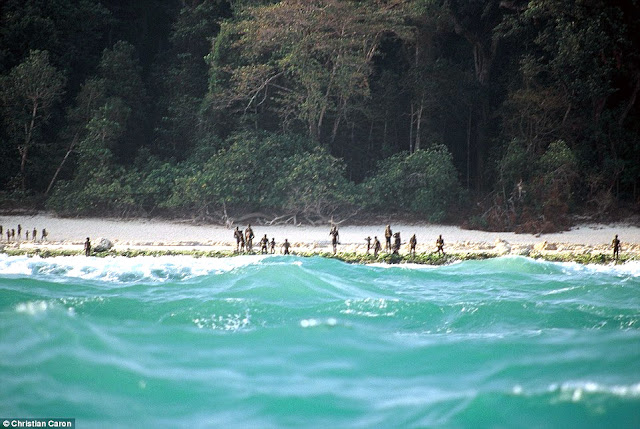1. Snake Island (Ilha da Queimada Grande)
2.The North Sentinel Island, Andaman and Nicobar Islands
This isolated island which host a small tribal group of few hundred people is situated in the Andaman and Nicobar Islands. This small island has been stayed isolated for thousands of years and still remains the same due to the aggressive nature of the tribal people. They don't welcome any visitors on that island. All that you can receive as a welcome gift could probably be a stone or an arrow dipped in poison. They have attacked and killed fishermen who got too close to the coastal area and also have tried attack helicopters who went close to their island.
3.The Lascaux Caves
Location: Dordoigne, Montignac, France.
Lascaux contains some of the best-known Upper Palaeolithic art. These paintings are estimated to be around 17,300 years old. (1) They primarily consist of primitive images of large animals, most of which are now known from fossil evidence to have lived in the area at the time.Lascaux is one of the worlds richest examples of cave-art with over 1,500 engravings and 600 drawings having been documented.The caves have been banned from the public since 1963 because the carbon dioxide given out by the human started to began to show some negative impacts on the ancient artworks. The caves are even listed as an UNESCO World Heritage Site. However since 2008, the caves have been completely closed off to the public following a fungal outbreak, with only a small handful of scientists allowed to enter for just a few days a month in order to study the paintings.
4.Tomb of the Qin Shi Huang, China
Location: Mausoleum of the First Qin Emperor, Lintong District, China
The tomb of China’s first Emperor, Qin Shi Huang, who died in 210 BC, is buried deep beneath a hill in Central China. The burial complex consists of a complicated network of underground caverns that were filled with all the things the emperor would need in the afterlife, including clay reproductions of his armies, family, servants, horses, and staff, widely known as the Terracotta Army. Since its initial discovery in 1974, over 2,000 statues have been excavated, each of them completely unique, and experts believe that there may be more that 8,000 in total surrounding the central tomb, still yet to be uncovered. However, the Chinese government might never allow the excavation of the emperor’s tomb, choosing to respect the ancient burial site.





Comments
Post a Comment